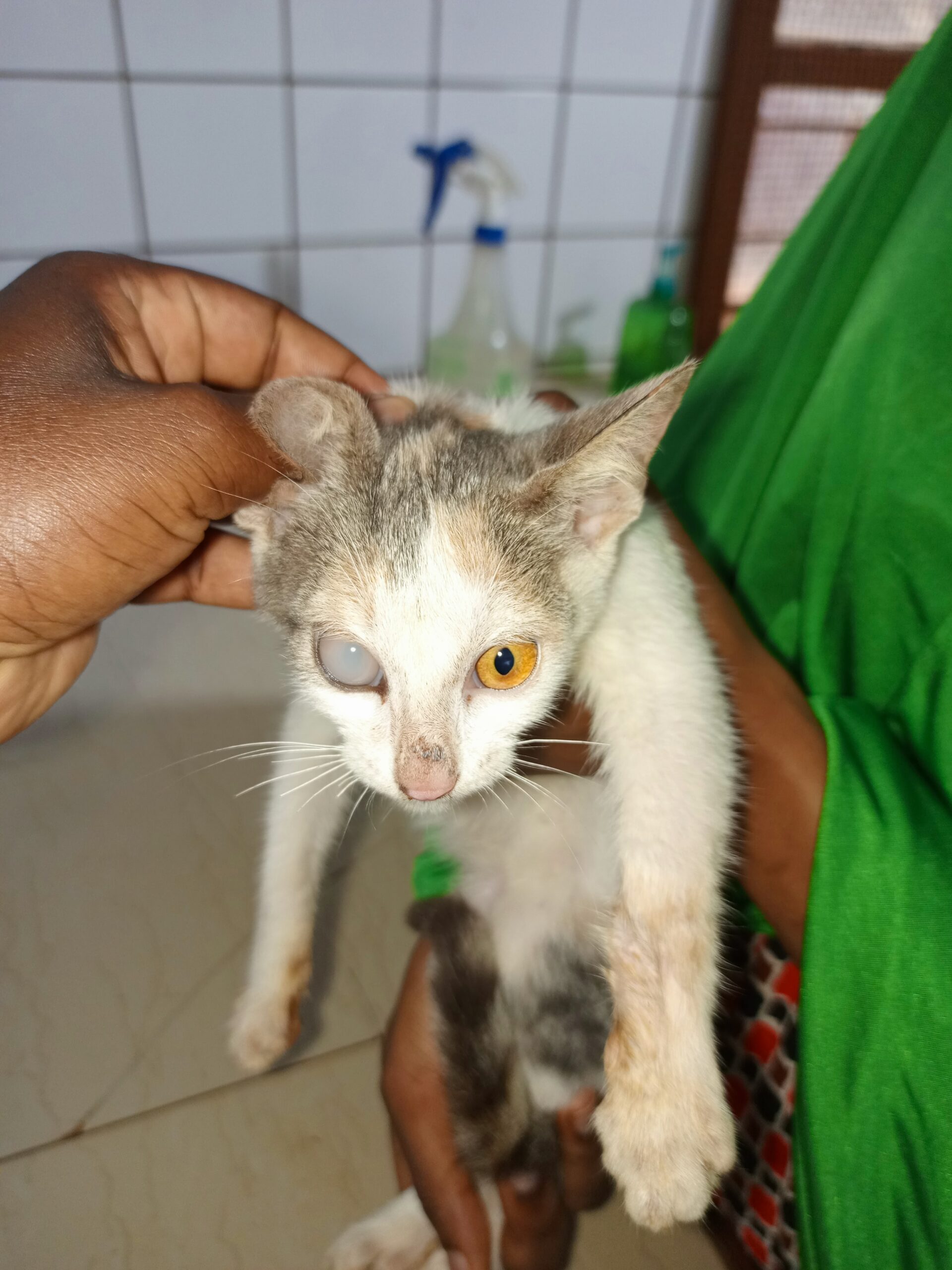
\causes, types, treatment, sysptoms, and prevention of cataracts in cats
While cataracts are a leading cause of blindness in humans, they are relatively rare in cats, but their impact can be severe if left untreated. Fortunately, successful treatment options exist for feline cataracts.
The cloudiness impairs vision and quality of life, commonly seen in kittens and senior cats. In kittens, it’s usually due to traumatic injuries and genetic disorders. Senoirs cats its mainly caused by chronic diseases and tramautic injuries.
It’s extremely distressing for cat owners to see their babies develop a cloudy layer in their eyes that compromises their quality of life. This article delves into the causes, prevention, symptoms, and treatment options for cataracts in cats’ eyes.
Stay reading
What is a cataract? (How does the cloudiness develop in the cat’s eye?)
Cataracts affect the lens of the eye, disrupting its ability to focus light and causing blurry vision. This occurs when proteins and water within the lens undergo changes, resulting in cloudiness. Though less common in cats than in humans or dogs, all feline breeds and ages can be affected, with a genetic predisposition noted in Burmese and Himalayan cats.
Breeds of cats that are genetically most likely to develop cataracts over their lifetime:
- Himalayan
- Birman
- Persian
- Bengal
- Russian blue
- British shorthair
How can I tell if my cat is developing cataracts?
Regular veterinary check-ups offer a valuable opportunity to monitor the well-being of your cat’s eyes and identify early signs of cataracts before symptoms become apparent to pet owners. The early stages of cataracts are typically more manageable when detected promptly.
Cats often adapt well to vision loss, especially in their familiar home environment, leading to the common scenario of cataracts going undiagnosed until they have progressed significantly.
It’s crucial to recognize that not all instances of cloudy eyes in cats are indicative of cataracts. The aging process may cause the lens to develop a cloudy appearance, a phenomenon known as nuclear sclerosis or lenticular sclerosis.
If your cat does have cataracts, you might observe signs of vision impairment, such as clumsiness, hesitancy to explore, increased caution on stairs, or difficulties locating their food bowl or litter tray.
Causes of Feline Cataracts
Various factors contribute to the development of cataracts in cats, including
Genetic disorders
Trauma
Metabolic disorders
Radiations
Diabetes
Bacterial infections
Viral infections
Nutritional imbalances or deficiencies
Hormonal imbalances
Vaccination reaction
Glaucoma
Eye cancer
Allergies
Entropion
Penetration of foreign material in the eye
Keeping the cat in a dark place for a long period of time.
Aging
Electric shock
Inability to metabolize certain chemicals
Inability to metabolize certain proteins
Signs and symptoms of cataracts in cats
Cats are adept at concealing discomfort, making it crucial to observe potential signs of cataracts, including
Cloudy appearance in one or both eyes
Photophobia
Swollen eye
Bumping into familiar objects
Change in eye color
While cataracts themselves are not painful, associated conditions may cause squinting or eye discharge.
How does the vet find out if my cat has cataracts?
The vet uses a special tool called an ophthalmoscope to closely check your cat’s eyes. They’re looking for cloudy spots on the lens inside the eye. If these cloudy spots are found, it means your cat has cataracts.
After finding cataracts, the vet goes on a mission to find out the specific cause of the cloudy spots in the cat’s eye. Usually, cataracts happen because of another health issue. The vet does a thorough check-up, including blood tests and other checks, to figure out what’s causing the cataracts. This helps them understand the main reason behind your cat getting cataracts.
Types of Feline Cataracts
Cataracts are classified based on severity:
Incipient (up to 15% of the lens is affected)
Immature (15-100% of the lens is affected but has no effect on light passage)
Mature (the entire lens is affected, impeding light passage). Identifying the stage is essential for determining the appropriate treatment.
Prevention of cataracts in cats
Avoid inbreeding
Proper feeding
Regular health check-ups
How to treat cloudy eye(s) or cataracts in cats
Addressing the underlying cause is key to treating feline cataracts. Approaches include drugs to reduce inflammation, administering systemic antibiotics, multivitamin supplementation, surgical removal of the eye (enucleation) in severe cases, or cataract surgery to replace the lens. Post-surgery care involves topical eye medicine and confinement to prevent complications.
Nutrition’s Role In Preventing Feline Cataract
Proper nutrition plays a vital role in preventing feline cataracts. Adequate intake of amino acids, antioxidant vitamins (C, lutein), B vitamins, and omega-3 fatty acids can reduce the risk. Choosing a balanced pet food appropriate for your cat’s life stage supports overall eye health.
In conclusion, vigilance, timely diagnosis, and appropriate care are crucial in managing feline cataracts and preserving your cat’s vision. Stay informed and work closely with your veterinarian to ensure the best outcome for your feline companion.
Contact us call / WhatsApp +256771909946 for free consultations
Don’t forget to read the related posts below and share them with other responsible pet owners.
vaccination schedule for cats in Uganda
21 Questions to Ask Yourself Before Getting or Adopting a Dog
Read about the 5 killer diseases for dogs in Uganda
Vaccination schedule for dogs (puppies) in Uganda
Read about the causes and treatments of vomiting among dogs
Read about the cost of treating a dog in Uganda
Read about if humans can get parvo
Get know if teething can kill a puppy
Read about how puppies get parvo
Find the best treatment for parvo in dogs.
Read about the price of spaying a dog in Uganda
Read about the prices of vaccinating a dog in Uganda
Read about the price of parvo treatment in Uganda
Read about the treatment of intestinal adhesion in dogs.
Read about the causes and treatment of hernias in dogs.
Read about the causes and treatment of weight loss in dogs.
Read about the loss of hair in dogs.
Read about the causes and treatment of bad breath in cats.
Read about 10 simplified steps for grooming a pet.
Learn the 8 steps of trimming the nails of your dog.
Read the causes of scratching in dogs.
Read the causes and treatment of ear infections in dogs.
Read the causes, prevention, and treatment of bloat in dogs
Reab about the causes and treatments of curled toes in turkeys
Read about causes and treatment of cancers in dogs
Vaccination schedule for dogs (puppies) in Uganda
